I’ve purchased one iPhone from every generation for the past 14 years — I’m no stranger to Apple and its ecosystem. Heck, I even make sure to always place an iPhone preorder to ensure I get my device on launch day (it’s become my annual tradition). Like many people, I put in my pre-order for a deep purple iPhone 14 Pro, because the Pro lineup just had too many great new features that I didn’t want to miss out on. From the whimsical Dynamic Island, the always-on display, and a 48-megapixel camera, it’s one fantastic mobile device.
But I think one of my favorite features of the iPhone 14 Pro isn’t something that’s entirely new. In fact, it’s been around for the past few years, ever since Apple launched the iPhone 12 series. While Apple has barely talked about it for the iPhone 14 series, it’s one of the features that is a serious game-changer and one that I can’t live without — MagSafe.
What is MagSafe?
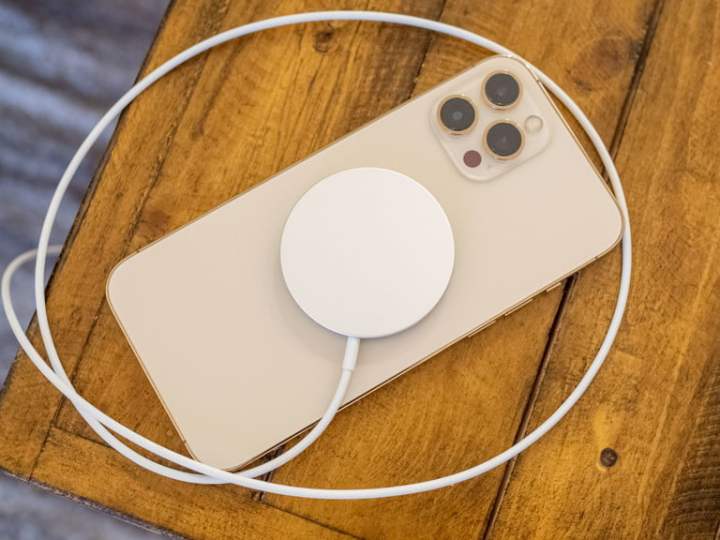
If you’re not familiar with MagSafe, that’s okay — again, Apple doesn’t discuss it much these days. Originally, MagSafe was just used on MacBooks, where the charging cable would “plug in” to the MacBook charging port via magnets. This was handy because if someone were to trip over the charging cable, the MagSafe bit would let the cable easily come out of the charging port, so your laptop didn’t come crashing down onto the floor. Apple replaced MagSafe on MacBooks with USB-C for a few years before bringing it back in the form of MagSafe 3 on the 2021 lineup of the MacBook Air, as well as 14-inch and 16-inch MacBook Pros from 2021.
Ever since the iPhone 12, though, Apple added MagSafe as a hardware feature for iPhones, including the iPhone 13 and iPhone 14 lineups. MagSafe is essentially a ring of magnets located in the back of the iPhone, which hold your iPhone in place with a slew of compatible MagSafe accessories — including wireless chargers, battery packs, phone grips, mobile tripods, card holders, and more.
Putting a case on your iPhone will weaken the strength of the magnets, but thankfully, there are a ton of MagSafe cases on the market as well. A MagSafe case has its own ring of magnets embedded in the case itself, so you can still protect your iPhone while not having to miss out on using all of your favorite MagSafe accessories.
MagSafe is an excellent feature that I rely on daily
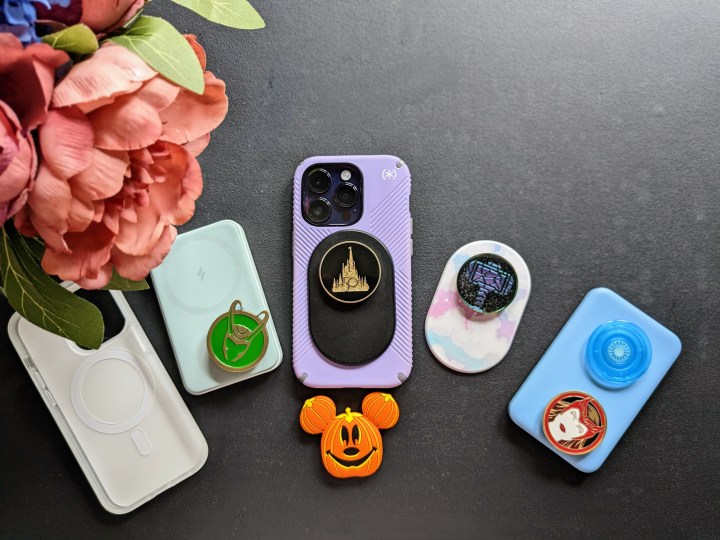
When MagSafe first launched, the range of accessories was pretty limited and had slim pickings. There was the official MagSafe wireless charger and MagSafe wallet from Apple, and some magnetic (not officially MagSafe) wireless power banks from third-party manufacturers (like Anker and mophie). But as time went on, more accessory makers made MagSafe-compatible accessories, like the PopSockets PopGrip for MagSafe and Joby’s GripTight GorillaPod for MagSafe — and it’s become something that I actually depend on daily when I use my iPhone 14 Pro. Seriously, there’s not a moment each day when I’m not using MagSafe in some way, shape, or form.
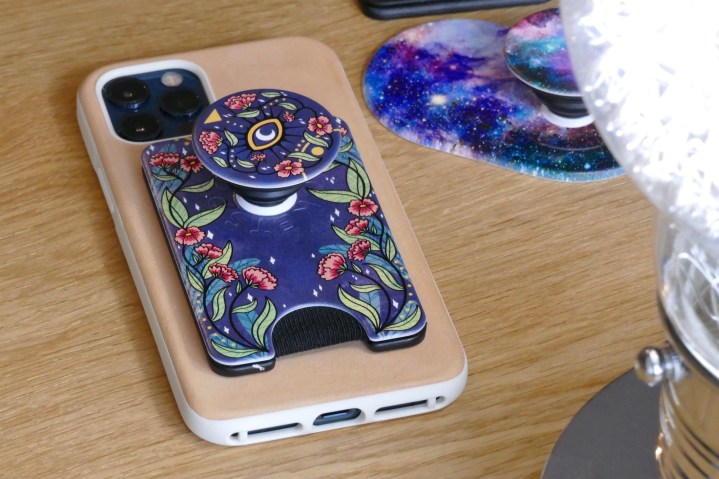
The MagSafe accessory that simply lives on my iPhone, aside from a MagSafe case (I’m clumsy and don’t trust myself with a naked iPhone because things have happened), is the PopSockets PopGrip for MagSafe. Several years ago, I thought PopSockets were the dumbest things ever, but then I bought one to see what the hype was all about.
I slapped that adhesive plastic to the back of an old iPhone XS with a case, and then I got it — I could use my phone with one hand! Well, kind of (I have small hands, and a 6.1-inch screen is barely manageable to begin with). It also made it so much better for me to take selfies because, otherwise, I would fumble and drop my phone. But I absolutely hated how PopSockets PopGrips attached via adhesive, even though it’s removable — simply because I change cases a lot.
When PopSockets launched its MagSafe lineup of accessories, I let out a cry of joy — finally! Instead of a small circular disc that sticks to your smartphone or case, it is now a larger, pill-shaped slab that has the magnetic circle and line underneath, helping it align perfectly with MagSafe on the iPhone 12 and up.
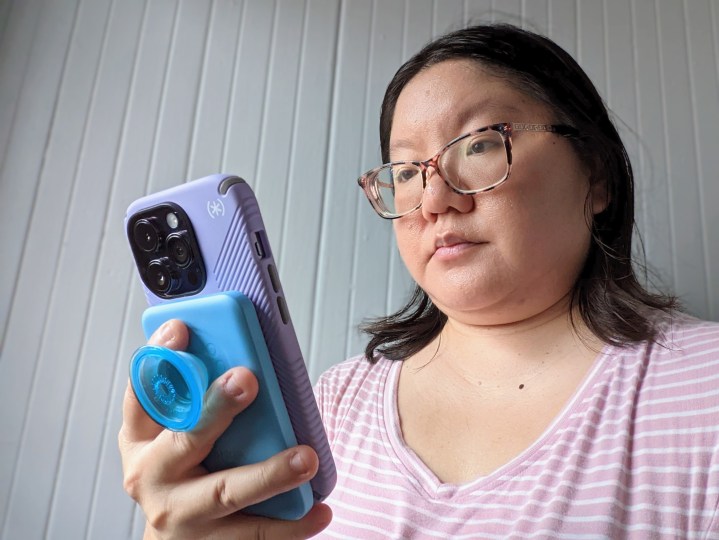
Sure, it’s larger and will cover up more of the back of your iPhone or case, but I’m fine with that since it’s so easy to take off. I have built up quite a collection of PopSockets PopTops (the collectible top parts of PopGrips) because I love swapping those out as well, especially for my Disneyland trips. I find it pretty difficult to use any smartphone now without a PopSocket, and MagSafe just made it a total lifesaver for me. I can easily take it off if I need to put it on a wireless charger or switch to a different accessory without removing the PopSocket or case itself.
So when does my MagSafe PopSocket come off? I am often at Disneyland, and if I’m doing a full day at the parks, I may need to pull out a battery pack toward the end of the day to top off my iPhone. Though I carry a regular battery pack (the kind that needs cables to charge with) with me just in case my husband needs to use it, I prefer to use MagSafe battery packs instead. My current go-to’s are Anker’s MagGo 622 (with a foldable back cover that doubles as a stand) and MagGo 633 (a MagSafe wireless charging stand with a removable battery pack). Anker also just released a new MagGo battery pack with an integrated PopSocket, which I’ve added to my repertoire. I just love the convenience of having my phone charge wirelessly while I’m there, and MagSafe holds the battery in place, too. No more having to fumble around with cables! And now the integrated PopSocket one lets me continue having a good grip on my phone while charging.
I also have a MagSafe car mount on my car’s dashboard, so I simply pull my PopSocket off and slap it onto my magnetic car mount when driving. Previously, I used those universal car mounts that clamp your phone in place, but MagSafe is so much easier when I need to remove it to use Apple Pay at a drive-thru. Another MagSafe accessory I like using is my Joby GorillaPod for MagSafe, as I use my iPhone 14 Pro for pretty much all of my photography for work. This magnetic tripod has proven to be a useful tool when I need to take product photos and I don’t have anyone else to help me take them.
As you can see, there hasn’t been a moment when I’m not using MagSafe with my iPhone for the past few years. I find it to be one of the most useful new additions to the iPhone in a while, and it really has been game-changing for me.
Where’s MagSafe for Android?
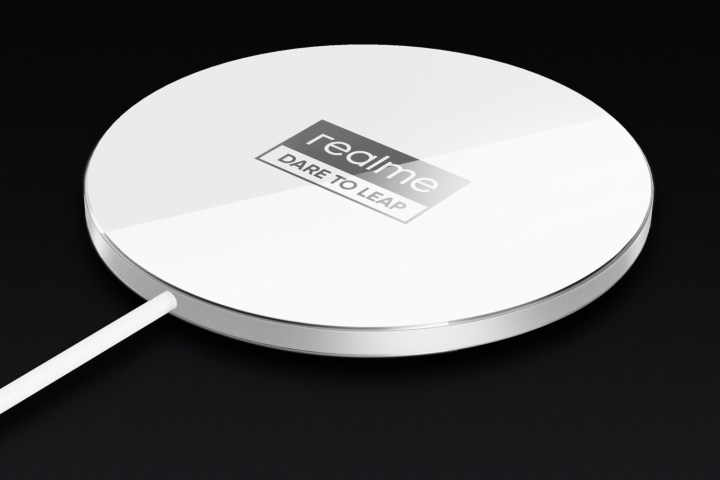
I’ve been using MagSafe on the iPhone since Apple introduced it two years ago. At this point, it’s become an integral part of my daily life, and I don’t think I could do without it. As I start to dive into the world of Android devices, I have to wonder — why doesn’t a MagSafe-like feature exist with other smartphone manufacturers?
As far as I’m aware, only Realme made an attempt about a year ago, called MagDart. However, Realme doesn’t sell phones in the U.S., and the MagDart system never really took off the same way that Apple’s MagSafe did. In the smartphone world, companies are always copying each other in terms of hardware and software features, so I’m surprised that MagSafe isn’t something that Android brands (at least in the U.S.) have already copied in the past two years.
Again, since I’ve been using MagSafe each day, it’s hard for me to go without it. As I try to use Android more, it’s just something that I sorely miss from my iPhone 14 Pro. Plus, I would have to replace a few of my accessories, like my MagSafe car mount and battery packs, with more universal versions.
Apple may not talk about MagSafe very much these days, but it still remains one of the iPhone 14’s best qualities — and something the Android world has yet to successfully copy.



